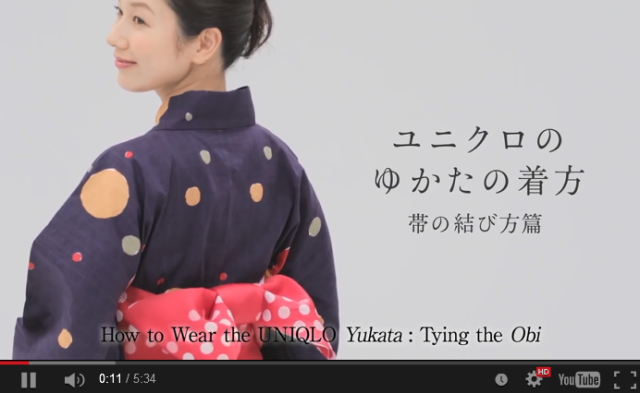Japan has an incredibly rich history of traditional performing art forms that have lasted through the centuries. It has noh, kabuki and bunraku, all of which provide classical entertainment even if you have no idea what is happening. Another popular form of Japanese entertainment is rakugo, which involves a lone storyteller sitting on a stage, telling comical stories with only two props traditionally: a fan and a small cloth. So while the rest of the world has stand-up comedians, Japan has sit-down comedians. All of these performances though have one small problem for foreigners, though: they’re almost always in Japanese.
That’s where Showko enters the scene. A brilliant entertainer who has traveled the world with her hilarious Rakugo performances and ventriloquist acts has been taking the comedy world by storm. Learn more about some of her performances and where to see her after the jump.














 Starbucks Japan adds a Love and Peach Frappuccino to its menu for a limited time
Starbucks Japan adds a Love and Peach Frappuccino to its menu for a limited time Real Buddhist monk plays Super Mario Bros., recites prayers every time he kills an enemy【Video】
Real Buddhist monk plays Super Mario Bros., recites prayers every time he kills an enemy【Video】 To combat declining birth rate, Japan to begin offering “Breeding Visas” to foreigners
To combat declining birth rate, Japan to begin offering “Breeding Visas” to foreigners Studio Ghibli’s Howl’s Moving Castle tapestry unveiled in Japan for first time
Studio Ghibli’s Howl’s Moving Castle tapestry unveiled in Japan for first time Pokémon summer kimono arriving in stores just in time for festival season
Pokémon summer kimono arriving in stores just in time for festival season Skip Tsukiji sushi?!? This seafood-stock ramen restaurant is a great reason to do just that
Skip Tsukiji sushi?!? This seafood-stock ramen restaurant is a great reason to do just that Kyoto experiencing problems with foreign tourists not paying for bus fares, but not on purpose
Kyoto experiencing problems with foreign tourists not paying for bus fares, but not on purpose Mister Donut releases Minion doughnuts in Japan!
Mister Donut releases Minion doughnuts in Japan! Buses in one of Japan’s largest cities can’t take new yen bills, leaving strange solution
Buses in one of Japan’s largest cities can’t take new yen bills, leaving strange solution Rapist to become first Japanese person caned in Singapore following conviction
Rapist to become first Japanese person caned in Singapore following conviction Fighting mild hunger with a Japanese soda that turns into jelly in the stomach【Taste test】
Fighting mild hunger with a Japanese soda that turns into jelly in the stomach【Taste test】 Studio Ghibli releases anime heroine cosplay dresses that are super comfy to wear
Studio Ghibli releases anime heroine cosplay dresses that are super comfy to wear Studio Ghibli director Hayao Miyazaki’s films now available in DVD and Blu-ray sets with extras
Studio Ghibli director Hayao Miyazaki’s films now available in DVD and Blu-ray sets with extras Studio Ghibli re-releasing all past theatrical posters and program booklets
Studio Ghibli re-releasing all past theatrical posters and program booklets Man passes away on Tokyo train, no one notices until nearly 12 hours and 650 kilometers later
Man passes away on Tokyo train, no one notices until nearly 12 hours and 650 kilometers later Studio Ghibli releases My Neighbour Totoro range showcasing traditional Japanese craftsmanship
Studio Ghibli releases My Neighbour Totoro range showcasing traditional Japanese craftsmanship Super Mario and Baskin-Robbins Japan collab returns for 2024 with new flavor, goods, and more
Super Mario and Baskin-Robbins Japan collab returns for 2024 with new flavor, goods, and more You can be on this beautiful Japanese island in less than two hours from downtown Tokyo
You can be on this beautiful Japanese island in less than two hours from downtown Tokyo Woman charged for driving suitcase without a license in Osaka
Woman charged for driving suitcase without a license in Osaka Taiwan’s most beautiful politician kicks groper in balls during visit to Japan
Taiwan’s most beautiful politician kicks groper in balls during visit to Japan Studio Ghibli releases new Totoro collection to keep us hydrated all summer long
Studio Ghibli releases new Totoro collection to keep us hydrated all summer long Foreign tourists to be charged four times more to enter Himeji Castle if local mayor gets his way
Foreign tourists to be charged four times more to enter Himeji Castle if local mayor gets his way Mitsubishi develops robot that solves Rubik’s Cube-style puzzle in 0.305 seconds【Video】
Mitsubishi develops robot that solves Rubik’s Cube-style puzzle in 0.305 seconds【Video】 McDonald’s new Happy Meals offer up cute and practical Sanrio lifestyle goods
McDonald’s new Happy Meals offer up cute and practical Sanrio lifestyle goods Sales of Japan’s most convenient train ticket/shopping payment cards suspended indefinitely
Sales of Japan’s most convenient train ticket/shopping payment cards suspended indefinitely Sold-out Studio Ghibli desktop humidifiers are back so Totoro can help you through the dry season
Sold-out Studio Ghibli desktop humidifiers are back so Totoro can help you through the dry season Japanese government to make first change to romanization spelling rules since the 1950s
Japanese government to make first change to romanization spelling rules since the 1950s Foreigner’s request for help in Tokyo makes us sad for the state of society
Foreigner’s request for help in Tokyo makes us sad for the state of society Ghibli founders Toshio Suzuki and Hayao Miyazaki contribute to Japanese whisky Totoro label design
Ghibli founders Toshio Suzuki and Hayao Miyazaki contribute to Japanese whisky Totoro label design Tokyo’s most famous Starbucks is closed
Tokyo’s most famous Starbucks is closed Doraemon found buried at sea as scene from 1993 anime becomes real life【Photos】
Doraemon found buried at sea as scene from 1993 anime becomes real life【Photos】 Princesses, fruits, and blacksmiths: Study reveals the 30 most unusual family names in Japan
Princesses, fruits, and blacksmiths: Study reveals the 30 most unusual family names in Japan Life-size vibrating Legend of Zelda Master Sword for sale from Nintendo【Photos】
Life-size vibrating Legend of Zelda Master Sword for sale from Nintendo【Photos】 Skip Tsukiji sushi?!? This seafood-stock ramen restaurant is a great reason to do just that
Skip Tsukiji sushi?!? This seafood-stock ramen restaurant is a great reason to do just that Kyoto experiencing problems with foreign tourists not paying for bus fares, but not on purpose
Kyoto experiencing problems with foreign tourists not paying for bus fares, but not on purpose Mister Donut releases Minion doughnuts in Japan!
Mister Donut releases Minion doughnuts in Japan! Buses in one of Japan’s largest cities can’t take new yen bills, leaving strange solution
Buses in one of Japan’s largest cities can’t take new yen bills, leaving strange solution Rapist to become first Japanese person caned in Singapore following conviction
Rapist to become first Japanese person caned in Singapore following conviction New hotel with Osaka Castle view is one of the best places to stay in Japan
New hotel with Osaka Castle view is one of the best places to stay in Japan Studio Ghibli adds The Boy and the Heron stamps to Line messaging app in Japan
Studio Ghibli adds The Boy and the Heron stamps to Line messaging app in Japan We eat at three Japanese family restaurants to find the one with the best-value breakfast
We eat at three Japanese family restaurants to find the one with the best-value breakfast W.T.F. Japan: Top 5 craziest Japanese certification exams 【Weird Top Five】
W.T.F. Japan: Top 5 craziest Japanese certification exams 【Weird Top Five】 What does a family restaurant in the middle of nowhere, Hokkaido, serve? We find out
What does a family restaurant in the middle of nowhere, Hokkaido, serve? We find out Japanese otaku finds way to get the smell of a high school girl in his car passenger seat
Japanese otaku finds way to get the smell of a high school girl in his car passenger seat Low-cost Japanese inn welcomes foreign guests with hot springs, sake tastings, cosplay backdrops
Low-cost Japanese inn welcomes foreign guests with hot springs, sake tastings, cosplay backdrops McDonald’s Japan releases first-ever matcha pie, perfectly timed for sakura season
McDonald’s Japan releases first-ever matcha pie, perfectly timed for sakura season Five uninhabited Japanese islands you can buy right now
Five uninhabited Japanese islands you can buy right now